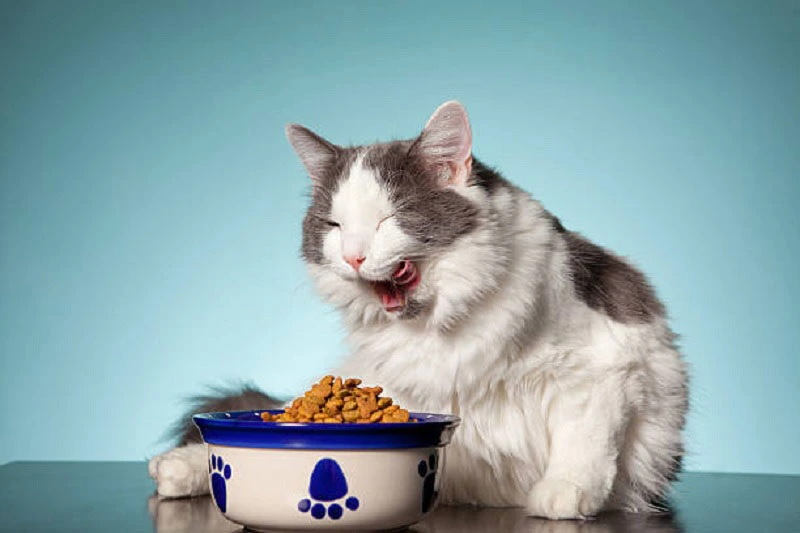
Genshin Impact Characters Ranked from Fun to Overpowered
Genshin Impact offers an interactive game packed with a wide range of characters, each bringing distinct abilities, elemental skills, and personalities. Over time, constant updates

Keeping a cat is indeed enjoyable. They can be loyal, playful companions, and bring a warm atmosphere to the home. However, caring for them requires a lot of attention. One crucial aspect is the cat food guide.

Feeding a cat isn’t just about keeping them full. It’s also about ensuring their nutritional needs are met. Food intake directly impacts your pet’s health, behavior, and quality of life.
The right food will help the digestive system function optimally, maintain healthy teeth and fur, and boost the immune system. Furthermore, proper nutrition can prevent various chronic diseases such as obesity, diabetes, and kidney problems.
Unfortunately, many cat owners still make mistakes when choosing or providing food. Some give too much human food. Others ignore the differences in nutritional needs based on individual needs. Here’s an important guide to feeding cats based on several factors.
A cat’s nutritional needs are greatly influenced by age. Kittens aged 4-5 weeks require food high in protein and fat, as they are still growing. Typically, kittens eat 3–4 times a day, with a serving size of about a quarter or half a cup per serving, depending on whether the food is dry or wet.
Once the cat reaches maturity, it can be fed twice a day. Typically, the portion size is about three-quarters of a cup of dry food per day, equivalent to 85–170 grams of wet food.
For adult cats, their digestive systems begin to slow down. Therefore, choose a low-calorie food that is high in fiber and additional nutrients such as glucosamine, especially to maintain joint health. Meal portions can remain twice a day, but be adjusted to avoid overfeeding.
Furthermore, breed also plays a major role in determining cat food guidelines. For example, Maine Coon cats are large and very active. Therefore, they require more calories and protein than Persians.
Maine Coons can require up to 400 calories per day, while Persians are sufficient with 250–300 calories. Furthermore, Sphynx cats (which are hairless) require more calories because they burn energy to maintain their body temperature.
Although not as obvious, a cat’s gender can also influence its feeding patterns and portion sizes. Male cats, especially those that are not spayed, are typically more active and have greater muscle mass. Therefore, they require more calories than female cats.
For example, an adult male cat may require 10–20% more calories than a female of the same weight. However, after spaying, both males and females will experience decreased physical activity and an increased appetite. Therefore, food intake must be adjusted to prevent obesity.
Not many people realize that health conditions are a very important factor in cat food guidelines. Cats that are sick, post-surgery, or have recently given birth have special nutritional needs. For example, cats with kidney problems require a diet low in protein and low in phosphorus.
Meanwhile, cats that have just given birth and are nursing require food high in energy, protein, and calcium. They can eat up to 2–3 times more than usual to support milk production and allow their bodies to recover. It’s also important to consult a veterinarian to ensure the right dosage and type of food.
Finally, a factor that shouldn’t be overlooked is the cat’s activity level and lifestyle. Indoor cats are usually less active than cats that frequently roam outside. Therefore, indoor cats need a low-calorie diet to prevent obesity.
Outdoor cats, or cats that tend to be more active, generally require a higher calorie intake to replace the energy they burn. Indoor cats typically need around 200–250 calories per day to stay healthy, while outdoor cats may require as much as 300–400 calories daily, depending on their body size and overall activity level. This difference ensures that each cat receives the appropriate amount of energy to support its lifestyle.

To optimize cat feeding, here are some important tips:
Overall, the cat food guide may seem simple, but it actually requires considerable attention. By following the guidelines above, cat owners can ensure their beloved pets are getting the right nutrition.

Genshin Impact offers an interactive game packed with a wide range of characters, each bringing distinct abilities, elemental skills, and personalities. Over time, constant updates

Natural Language Processing (NLP) is a subfield of computer science and artificial intelligence that utilizes machine learning. This technology enables computers to understand and communicate

Artificial Intelligence is a technology capable of mimicking human intelligence. Today, digital developments are rapidly emerging and significantly transforming various fields. One of these is